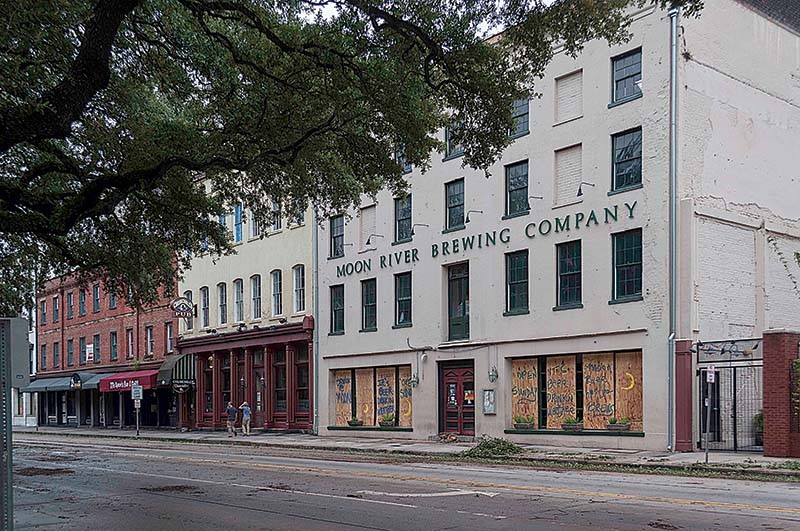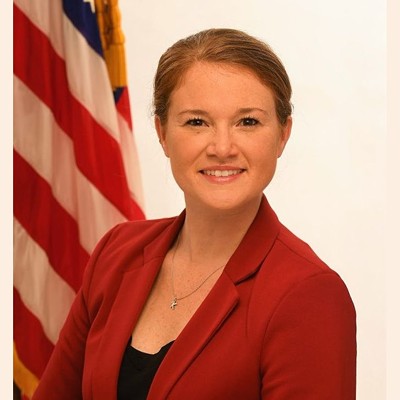I'M CERTAIN my bicycle helmet is not designed to take a direct strike from a falling sweetgum branch, but I was still glad to be wearing it on the morning of Oct. 8. As the hurricane's winds started to subside, I pedaled over to a friend's house. She'd evacuated to Athens and wanted me to check its condition. I repeated this type of reconnaissance mission several times throughout the morning and kept my helmet on, even when I wasn't riding my bicycle. Having listened to things falling in the darkness of the early morning hours, I had become much more aware of objects overhead.
After Matthew moved up the coast, the maneuverability of bicycles made them the best vehicle for finding a way through streets scattered with debris and getting out of the way of emergency and other official vehicles. Those who stayed behind in Savannah found themselves, at least temporarily, using streets that were nearly devoid of civilian motor vehicles. Fallen limbs narrowed lanes and prevented people from speeding.
I don’t mean to dismiss the suffering Matthew caused in our area. There is plenty more of that to come as people begin to cope with the damage. I don’t mean to revel in the suddenly calm streets in the absence of fast-moving cars. Homes and businesses have been destroyed, and two lives lost.
However, there are thousands in our community who depend on their bikes and their feet to get everywhere they need to go. For them, our automobile-centric streets are a daily threat. Following the storm, the drastic reduction in car and truck traffic, slower vehicle speeds, and persistent police patrols probably made them safer than they usually are.
Later in the day on Saturday, my wife and I rode into the National Landmark Historic District, which I had heard described as a ghost town. This turned out not to be exactly correct. True, the blare of security alarms echoed in the heart of the city, creating an eerie vibe, but there were people to be seen.
We noticed the door of the Ordinary Pub was open and were pleased to find a scaled down menu being served by a small contingent of people, and smiling customers happy to have a burger and beer after what was a harrowing night for many. Owner Mike Vaudrin and his chef rode out the hurricane in the subterranean restaurant, alternating between operating a wet/dry vac to keep the place from flooding and playing Madden. By opening the pub, at least until curfew, they provided comfort food and good cheer to people who were grateful for it.
On the way back home to Chatham Crescent, we stopped at almost every square to talk with people. A stranger asked us to take his photo in Monterey Square. We also ran into “KC,” the dean of Forsyth Park palmetto rose makers. And the Savannah Morning News’ City talk columnist. And a longtime friend whose child was among those scrambling up the trunk of a downed tree, while adults nearby discussed the awful toll the storm took on our precious tree canopy.
Clearly, downtown was not a ghost town. Local people were on the streets. Cars weren’t.
Yet, where cars did congregate, law enforcement resources were dispatched to keep order. Drivers jockeyed for position at a convenience store on Victory Drive and cops stayed on the scene to control the mayhem.
In comparison, the line at the Sentient Bean’s counter was longer than normal on Sunday morning and many people in the line (including me) clearly needed coffee, but a police presence was not required to prevent violence.
I don’t doubt the official estimate that 75 percent of people evacuated, but I suspect historic district residents may have been more likely than others to shelter in place.
In the parts of the city designed by Gen. James Oglethorpe and in those where his grid pattern has been emulated, life seemed to return to a version of normalcy more quickly after the storm. People who encountered a blocked street or sidewalk could easily take a one block detour to avoid the obstacles. Contrast that with suburban neighborhoods with only one way in and one way out. If that road is blocked, no one can reach their homes unless they hike in. If the road is blocked by a downed-but-live power line, no one gets in or out at all.
Cities around the world are using Oglethorpe’s sensible, sustainable, and resilient city plan a model for their efforts to prepare for a turbulent future. We’d do well to reembrace it with more vigor here.


























